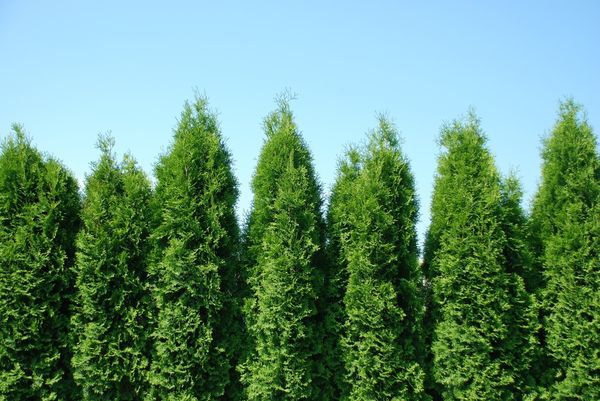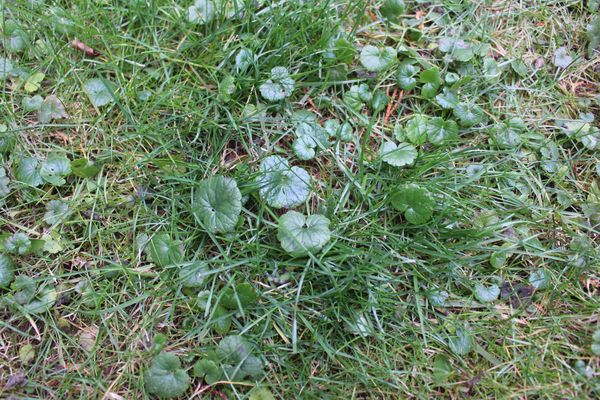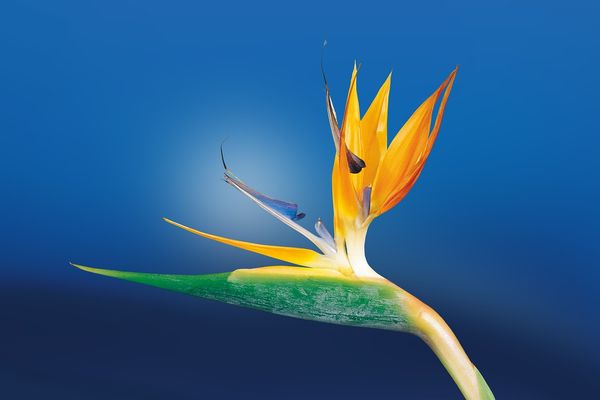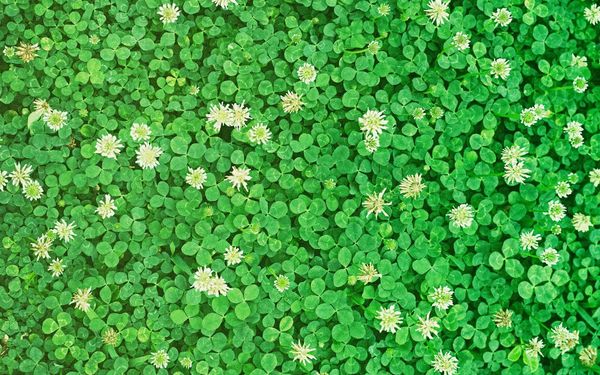Plant fertilization is a crucial but sometimes misunderstood aspect of gardening. Choosing the appropriate fertilizer mix may be time-consuming and challenging for seasoned gardeners.
A balanced formula containing the essential macronutrients in a ratio many plants need is provided by a 17-17-17 fertilizer. Read on to discover more about the balanced fertilizer's components, significance, application techniques, and the plants that may profit from it.
Understanding the fertilizer label for 17-17-17
Even though labels include a lot of information, they are, luckily, all nationally standardized. When you comprehend one, you will understand them all.
A fertilizer grade refers to the bold numbers at the top that indicates how much of the essential nutrients will be provided by the fertilizer.
Nitrogen is always the first number, phosphorous is the second, and potassium, often known as potash, is the third. The fertilizer 17-17-17, sometimes triple 17, has an identical amount (17%) of each nutrient.
N-P-K Ratio
NPK is short for: Nitrogen (N) - Phosphorus (P) - Potassium (K)
Nitrogen
The demand for nitrogen in plants stems from a few essential factors. It is primarily what propels the creation of chlorophyll. Chlorophyll provides plants with their rich green color and allows them to create the cells necessary for average cell growth and development.
It also stimulates food creation by converting stored energy in a plant into starches and carbs.
Additionally, nitrogen is necessary for plants to use proteins and enzymes properly and successfully control water and nutrient intake. They couldn't exist without it.
The quantity of nitrogen required to support sound development and their green hue differs for all essential macronutrients. It does vary significantly from one plant species to another.
Phosphorus
Every process in plants uses phosphorus as a catalyst. As this initiates the crucial function of turning starches and carbs into food, it is essential for photosynthesis.
It is an essential component of both RNA and DNA, which aids in reading and responding to DNA in plants and stores the memory of how the plant develops and reproduces.
For the plant to effectively employ the information for creating proteins, using sunlight to make and store energy, and promoting reproduction, phosphorus joins and connects DNA and RNA. It's essential for the growth of buds, flowers, and fruits.
Additionally, it helps the growth of the plant's root system and strong cell walls from seedlings to fully grown adult plants.
Potassium
Potassium, often known as potash, impacts a plant's quality. Bolstering the root system increases the plants' robustness and disease resistance. Building cellulose inside the plant also aids in drought resistance and cold weather survival.
When potassium is added to fertilizer, the other nutrients are combined with benefits. For instance, potassium and nitrogen cooperate by encouraging the development of nitrogen's protein content. Additionally, it may activate the enzymes that phosphorus uses to aid the plant in reading its DNA.
What Purposes Does Triple 17 Fertilizer Serve?
The soil of numerous crops, plants, trees, and shrubs is enriched by applying triple 17 fertilizer in the commercial setting.
As a fertilizer for home usage, it may be applied to lawns, vegetable gardens, trees, shrubs, and other plants to promote growth. It may promote healthy roots, thick foliage, and protection from pests, diseases, drought, and subfreezing conditions.
When Should You Use Balanced Fertilizer?
A balanced fertilizer measures each nutrient evenly. A triple 17 fertilizer, in this instance, comprises 17% of nitrogen, 17% phosphorous, and 17% potassium.
Before planting, deficient soil may be improved using balanced fertilizers. New development can be stimulated for existing plants at the beginning of the growing season.
By boosting general plant and root development, adding a balanced fertilizer may aid plants in establishing themselves as they start to expand.
Fertilizer Types
Whether you choose organic or synthetic fertilizer, each offers distinct benefits and ways to be applied.
Liquid Concentrate
Fertilizers that are liquid concentrates often need to be diluted with water. Although they may also be applied with a hose, a sprayer, or a watering can and come in ready-mixed formulae that don't need to be diluted beforehand.
Liquid fertilizers' most significant benefit is how rapidly plants can take it. They are a fantastic technique to improve your plant's health and show results practically immediately after application.
Be cautious. Because liquid concentration is likely to flow off, this might contaminate nearby water sources, endangering the ecosystem.
Water Soluble Powder
Water-soluble fertilizer is available as a powder that may be sprayed over the ground or dusted into the soil after being diluted with water.
It's a quick approach to meet your plants' demands, but since it's so concentrated and quick-acting, there's a chance of root burn. When feeding extremely young seedlings, dilute the fertilizer by up to a fifth of the amount recommended for mature plants to prevent burn.
Due to their rapid absorption rates, these fertilizer varieties are prone to run-off and need more frequent application.
Slow-Release Granules
Most people are acquainted with slow-release granular fertilizer since it is a widely utilized form of fertilizer.
Soil bacteria progressively break down a slow-release fertilizer's granules. This indicates that it will take longer for the soil and plant roots to absorb the nutrients contained in the granules.
Depending on the manufacturer's recommendations, one application of this kind of fertilizer may continue to be beneficial for 30 to 90 days.
Always read the labels and directions for information on how and how much to use any fertilizer. Remember that certain slow-release fertilizers need up to 48 hours of sitting time before watering, while others must be watered immediately.
Fertilizer Spikes
Fertilizer spikes are a solid fertilizer that may be pushed or pounded into the ground, as their name suggests. They are also pre-measured for your convenience and are lighter to store than bulky sacks.
Like slow-release granules, the spikes degrade over time and release nutrients gradually into the soil, where the roots of the plants will soon absorb them.
Since more enormous trees or coverage areas need more spikes, they are often more costly than alternative fertilizer application techniques. On the other hand, they don't emit any smell, making them a practical choice for usage around dogs.
Use of Triple 17 Fertilizer: When and How
There are substantial differences in how and when to apply fertilizer from one plant to the next and from one fertilizer product to another. Always read the instructions carefully to ensure you administer the product safely and at the appropriate application rates. Not all plants need a balanced fertilizer like Triple 17.
Trees and Shrubs
Newly planted trees and shrubs will get the nutrients necessary to sustain healthy growth in their development's early and fast-growing phases by applying 17-17-17 fertilizer to the planting hole.
Applying Triple 17 to more significant, more established trees and shrubs in nutrient-poor soil can enhance their color, rectify drooping and wilting, and defend against pests, diseases, drought, and especially shivering cold temperatures.
Established trees usually don't need any further fertilizer if you compost or mulch frequently around them. However, you should do a soil test to see if any nutrient shortages exist, then fix them appropriately if foliage starts to yellow, brown, wilt, or drop.
Fruit Trees
A balanced fertilizer won't harm your fruit trees but needs a greater concentration of certain macronutrients at particular points in their growth cycle.
For example, greater phosphorous levels before the bud set will aid in forming flowers and fruits as the growing season develops. Higher nitrogen levels at the start of the growing season would stimulate new development.
Potassium fertilizer used in the autumn will help preserve fruit trees from pests and diseases, promote a large yield, and provide a crop with a longer shelf life.
Flowers
Bedding plants, border flowers, and decorative plants need frequent fertilizer with a balanced feed to maintain that crucial brilliant midsummer show of color, whether planted in the ground or pots, containers, or hanging baskets. Choose a liquid concentrate 17-17-17 fertilizer here if your soil is less than nutrient-rich.
You may afford to reduce the N-P-K fertilizer to a 10-10-10 fertilizer or even a 5-5-5 fertilizer when the soil quality is excellent. By doing this, any forced growth or out-of-season blooming will be avoided.
Consider feeding the soil before planting annuals, as they often need it as soon as they develop. You may continue to apply a balanced fertilizer from spring through fall until flowering ends since perennials continue to bloom after annuals die.
Vegetable Gardens
Vegetables have different fertilization requirements based on the season and the kind of vegetable. Not all vegetables need an equal balance of nutrients.
A Triple 17 fertilizer may be incorporated into the soil before planting if you have tested your soil and determined it is deficient in nutrients.
After the plants are established, you must be pickier with your fertilizer's N-P-K ratios. For leafy plants like spinach and cabbage, use a high-nitrogen fertilizer to promote a lot of foliage and a deep shade of green.
For root crops like carrots and beets, however, avoid applying heavy nitrogen fertilizers since this can prevent development below the soil and promote a lot of needless leaf growth. Use a fertilizer with additional phosphorus and potassium for this kind of vegetable.
In the early phases of bud growth, fruiting edibles like tomatoes, squash, and melons also need extra phosphate and potassium.
If you want to guarantee a large and healthy crop, stay away from a balanced fertilizer for these plants. Instead, choose a high-phosphorus fertilizer, a specialist tomato fertilizer, or a fertilizer for pumpkins and squash.
Houseplants
It's essential to feed indoor plants only while actively developing and not during their dormant season.
Any houseplant should not use a full-strength 17-17-17 fertilizer, in my opinion. To prevent any possibility of root or leaf burn, you might dilute it to a third of its potency if that's all you have.
Grass and a Lawn
Triple 17 fertilizer may assist lawns and grass, particularly after spreading grass seed or installing new sod, since it will help create healthy growth and root development. Additionally, it will aid in protecting young crops from bad weather and against pests and diseases.
Apply additional Triple 17 fertilizer in the autumn for established lawns, but do so in the spring when the grass is actively developing. Before winter dormancy, fertilizer application will aid in the plant's recovery from any harm caused by summer droughts and heavy foot traffic.
When using fertilizer in the summer, stay away from 17-17-17. Your established lawn now requires a high-nitrogen fertilizer to foster healthy development and a brighter color.
"Maximizing Plant Growth
Discovering the benefits of all-purpose fertilizer is crucial for gardeners looking to achieve optimal plant growth and health. The 17-17-17 fertilizer, commonly referred to as Triple 17, is a balanced blend of nitrogen, phosphorus, and potassium, providing equal amounts of these essential nutrients to your plants. This makes it an excellent choice for gardens showing signs of phosphorus deficiency, which can lead to poor root development and stunted growth. By incorporating Triple 17 into your gardening routine, you ensure that your plants receive a balanced dose of nutrients, promoting robust growth and vitality.
In addition to its balanced N-P-K ratio, the 17-17-17 fertilizer also contains other minerals that are crucial for plant development. Potassium, also called potash, plays a vital role in flower and fruit formation, disease resistance, and the overall strength of the plant. Ensuring your plants have enough potassium is essential, and using an all-purpose fertilizer like Triple 17 helps in achieving this balance. By carefully following the manufacturer's instructions, you can apply the fertilizer effectively, ensuring that your plants receive the right amount of nutrients they need to thrive.
As a general rule, it's important to know when and how to use the 17-17-17 fertilizer to get the best results. Timing is crucial, and applying the fertilizer during the growing season ensures that the plants can utilize the nutrients effectively. Following the manufacturer's instructions is imperative, as over-fertilizing can lead to nutrient burn, harming your plants. By using Triple 17 as part of a comprehensive gardening plan, you provide your plants with the essential nutrients they need, ensuring a lush, vibrant garden throughout the growing season.
Conclusion
Using 17-17-17 fertilizer is an excellent strategy to promote healthy growth for a variety of plants, including your house plants and vegetable garden. The balanced nutrient composition of this fertilizer works wonders in promoting healthy growth by boosting root growth and preventing stunted growth often caused by nutrient deficiencies. Especially for root vegetables, a well-nourished root system means healthier, bigger, and tastier produce.
Organic fertilizers are a good alternative for those seeking a natural approach, but remember that 17-17-17 synthetic fertilizer, if used correctly, can also safely promote vigorous growth. It's not only about growing your plants; it's also about the fruit protection. With this fertilizer, you can ensure your fruits, flowers, and vegetables all receive the balanced nutrients they need, ultimately leading to an impressive yield and vibrant flower beds.
In the world of gardening, there's no one-size-fits-all. Each plant has unique needs, and by understanding them, you can cater to their specific requirements. Whether you're growing lush house plants or a fruitful vegetable garden, incorporating 17-17-17 fertilizer in your plant care routine can effectively boost plant growth, root growth, and overall health. Remember, a healthy plant isn't just about the above-ground aesthetics; it's also about promoting a strong and healthy root system to sustain long-term growth.






